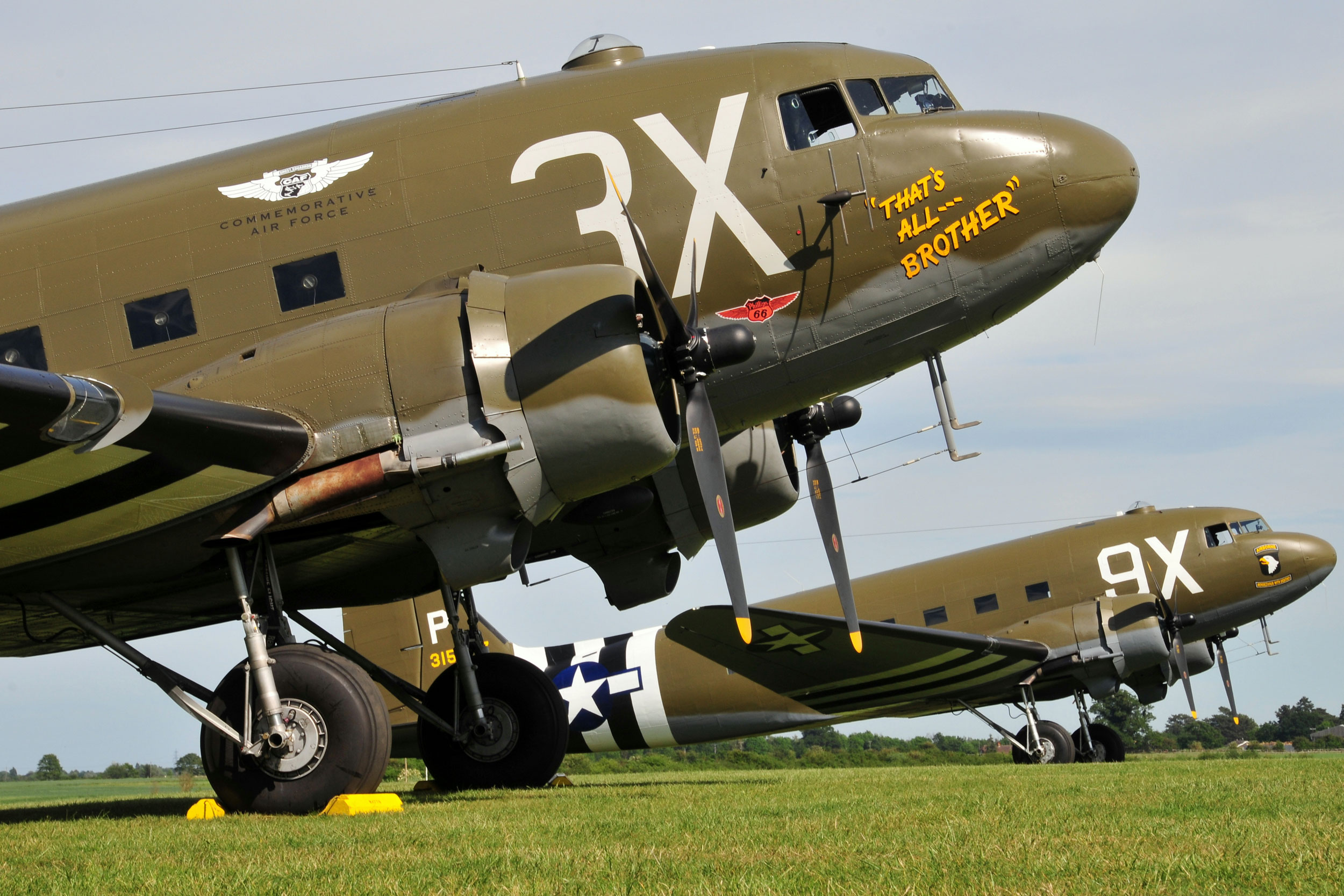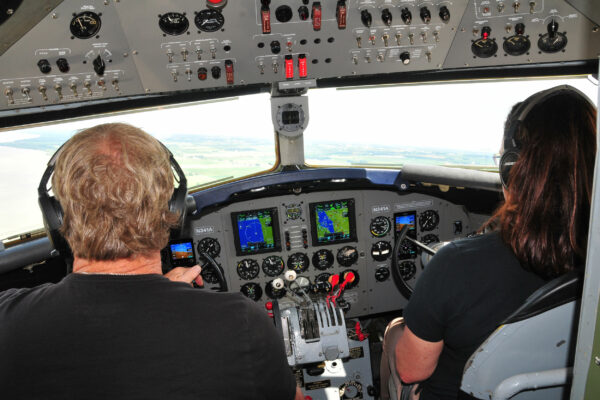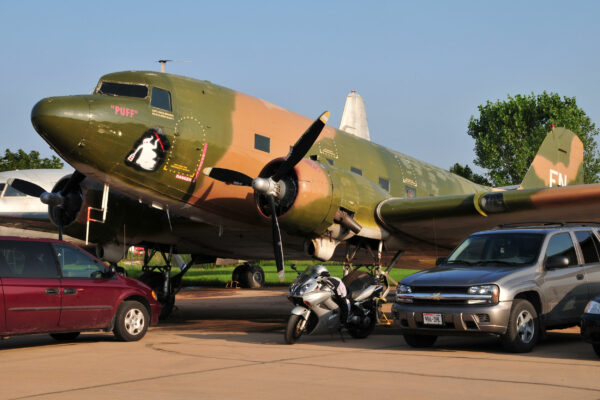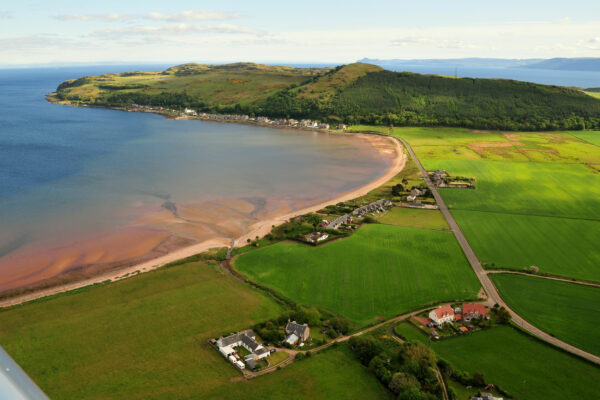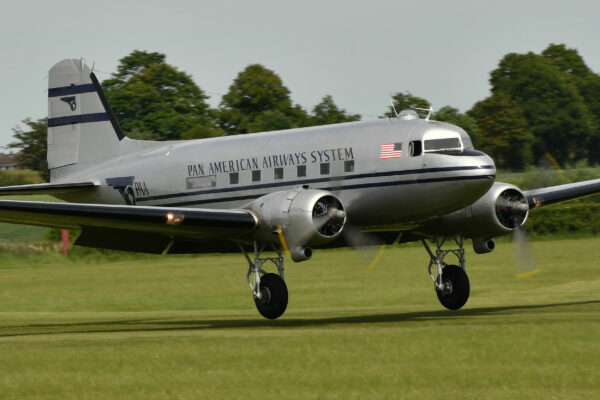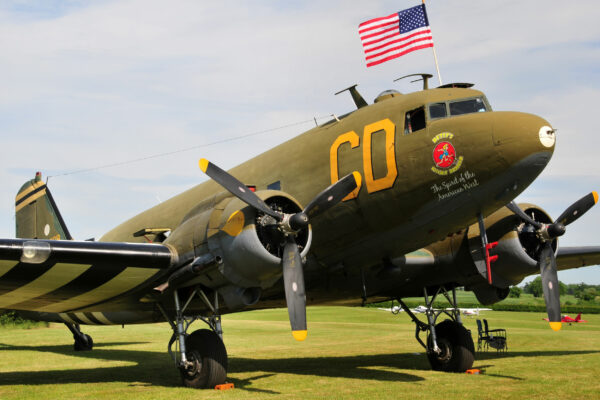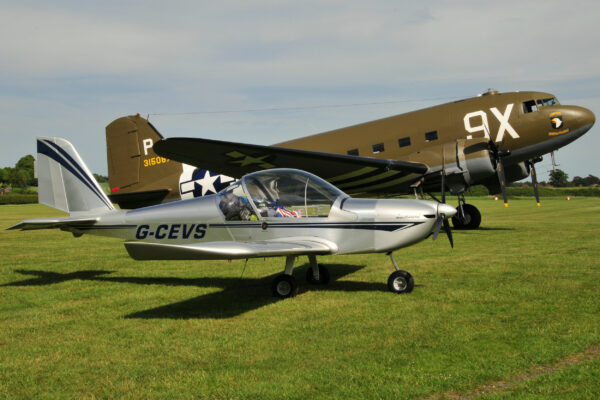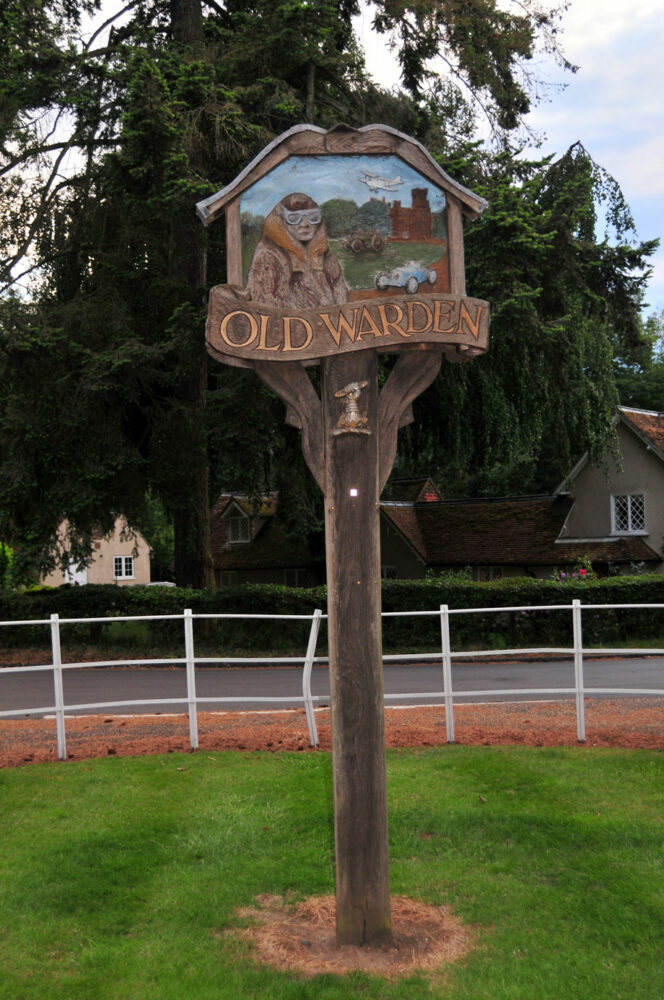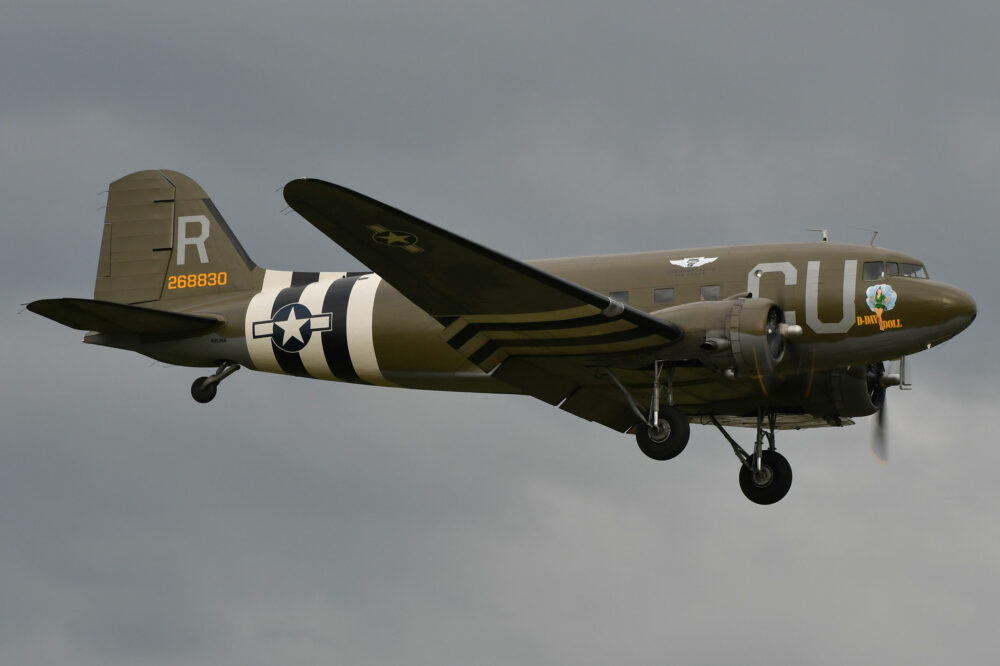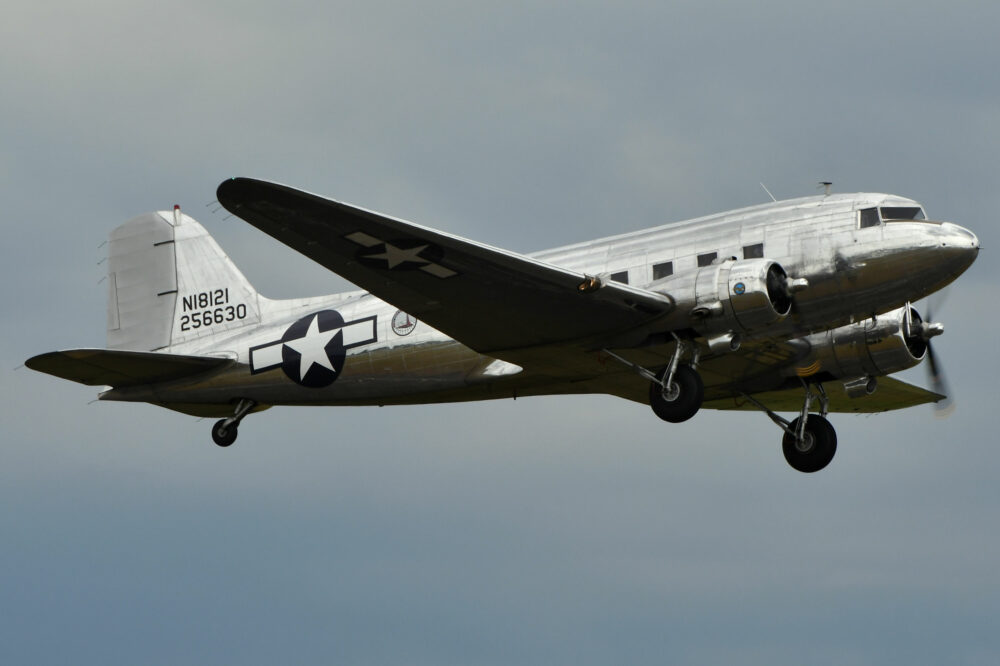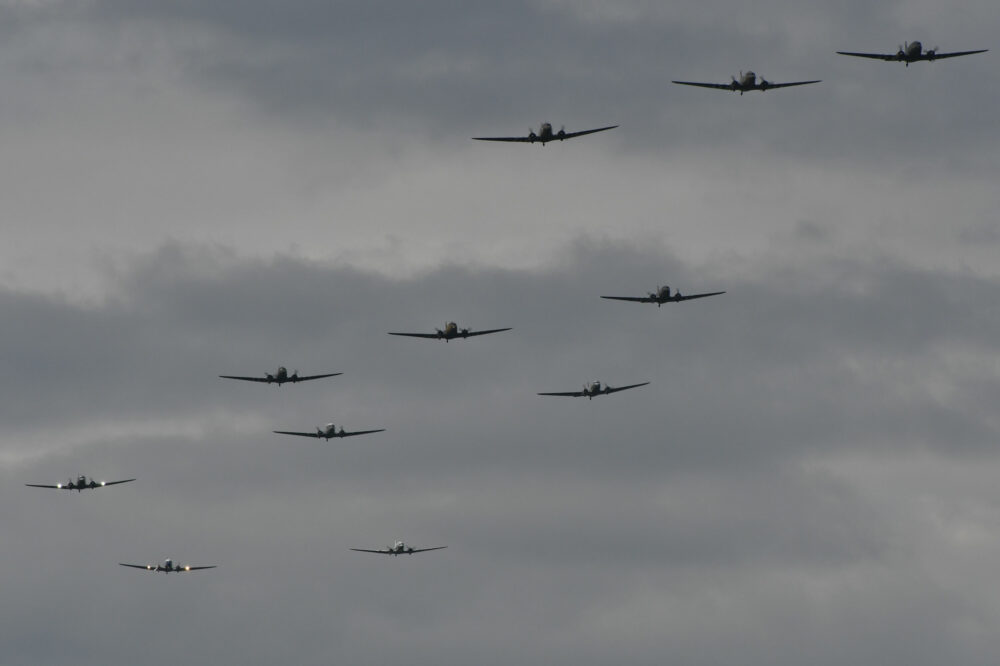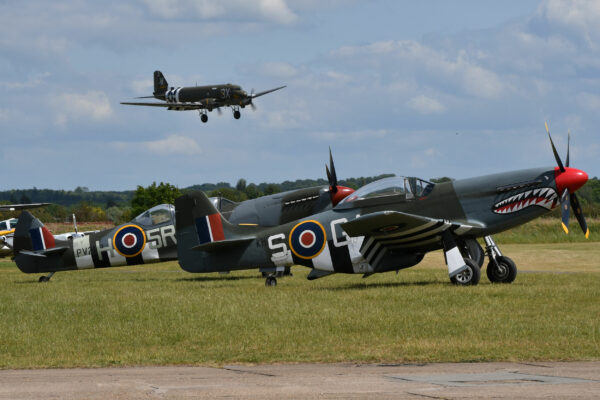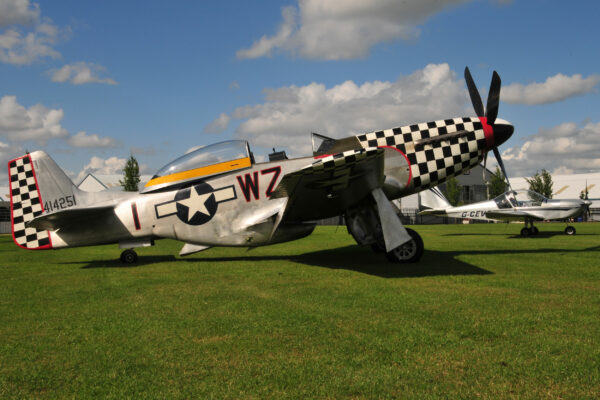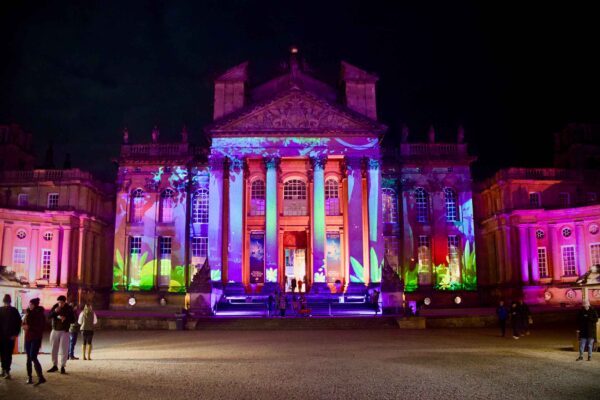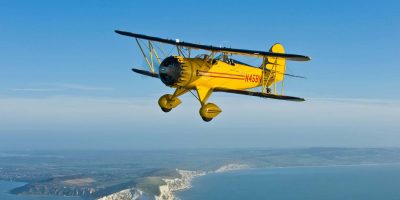Across the Atlantic
From the outset, the CAF intended to fly the aircraft to Europe for the D-Day 75 anniversary events. When Nigel and I attend a press conference at AirVenture 2018, disparate groups have joined to form the US D-Day Squadron and hope to fly around 20 DC-3s across the Atlantic to join with European aircraft at Duxford and Caen. We are lucky to be taken aloft over Oshkosh, Nigel in That’s All, Brother, sitting on the paratrooper bench seats, while I enjoy a bit more luxury in ex-pat Richard Martin’s Californian-based N341A.
N341A is the sole C-41A, a 1939 DC-3 purchased as a military command transport and later used as the personal transport of General Hap Arnold, head of the USAAF. N341A really is travelling in style and the aircraft is fully IMC capable with twin Garmin GTN750 GPS/Nav/Comm and de-icing boots.
What a treat flying over Oshkosh in this iconic aircraft which, incidentally, is one of the lower timed DC-3s around with less than 10,000 hours. Enthused, Nigel and I undertake to meet up with the D-Day Sqn during their European adventure.
Mid-May 2019 and the US DC-3s gather at Oxford, Connecticut. They will follow the WWII Northern Ferry Route from Oxford, Connecticut / Goose Bay in Newfoundland / Narsarsuaq, Greenland / Reykjavik, Iceland / Prestwick. On 22 May, I learn that four Dakotas have enjoyed good Atlantic weather and are arriving at Prestwick, so decide to fly up from Eshott to hopefully grab some photos from above.
Kev Waugh joins me and we plan to fly the two hours north to camp overnight on Bute. We depart Eshott at 1600 in a stiff breeze, Kev in his Eurostar SL and me in our group owned Eurostar Classic G-CEVS. Cruising at 100mph we are soon over the beautiful Southern Upland hills (rising to 2,756ft), speaking to the ever-helpful Scottish Information.
I amuse trainee controller Liam Moran with my clumsy pronunciation of the Scottish reporting points and he happily passes on my request for photography to Prestwick. As a result, on handover, Prestwick immediately clears me to enter the zone and take photos over the Dakotas which are parked to the north of runway 30.
I spy the four Dakotas (in reality they are C-47s, but while not strictly correct, I’ll use the generic British name to cover the different DC-3 variants), which are unloading a huge pile of transatlantic kit and make a grand sight in the evening sunshine. Three of the four, That’s All, Brother, Placid Lassie and the Legend Airways aircraft flew on D-Day operations.
Prestwick play it’s part
Prestwick saw huge expansion in WWII with two concrete runways and extensive aprons being added in 1942 to host an increasing number of aircraft being ferried from the US and Canada. By the end of WWII, some 37,000 aircraft had passed through Prestwick with 300 per day arriving at its peak in 1944. Prestwick still regularly hosts USAF aircraft and the Dakotas make an interesting contrast with three C-130s and a KC-135 tanker parked close-by.
After enjoying half-a-dozen orbits at 500ft, I exit the Prestwick CTR at Irvine harbour before catching Kev up over Bute. It’s always a pleasure to fly on the west coast of Scotland and we enjoy some low-level sight-seeing before positioning for Bute’s 480m grass Runway 27.
As with many Scottish island strips, Bute was originally used by Loganair air ambulance Islanders before helicopters took on the service. Whilst the strip is still owned by the Mount Stuart Estate, its maintenance is overseen by enthusiastic mainland pilots Sandy Cameron and Willie Long who rely on donations from visiting pilots for its upkeep. Details on how to donate are attached to the Control post (literally a box mounted on a wooden stake!) next to the windsock at the western parking area. One major improvement this year has been the removal of trees from the eastern end allowing a clear approach to Runway 27.
Kev and I enjoy a short walk to the Kingarth Hotel, which not only serves great food, but also has first-class B&B. However, after an excellent meal we return to the strip and put our tents up while enjoying a magnificent sunset with stunning views of the Isle of Arran.
We rise early and with no facilities at the strip, you really need to be self-sufficient. I’m well prepared and cook bacon sarnies on my camping stove which runs on unleaded petrol, handy as I can take it out of G-CEVS’ fuel drain. That said, it would be most embarrassing for a future AAIB report to read ‘the Eurostar ran out of fuel after the occupants enjoyed a hearty breakfast’.
We depart Bute, a real gem of a strip, and while no PPR is required, please do support Sandy and Willie should you drop by.


